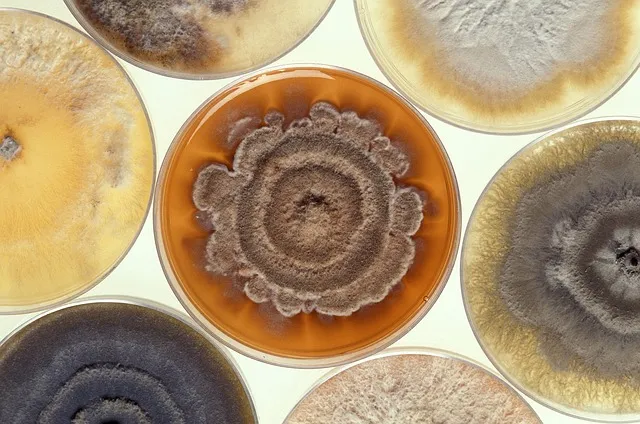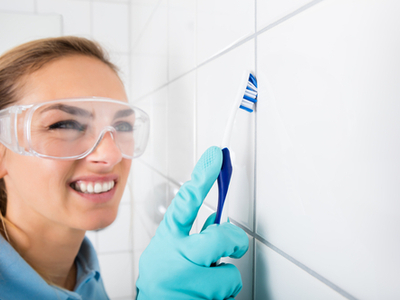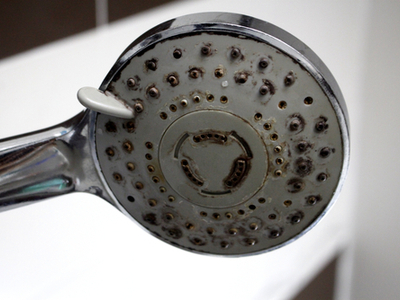How to Clean Mold in Showers? There are thousands of types of mold spores travel through the air around us every day. Once these spores settle, they can reproduce rapidly in 24-48 hours – all they need is moisture and oxygen, so bathrooms and showers provide the perfect breeding ground for mold to grow.
Unlike mildew, which forms on surfaces, mold is a fungus that can penetrate porous materials. If you see black or green gunk in the corners of your tiles and caulking or dark spots along the walls, you probably have mold.
Molds carry health risks, especially for people with acute illnesses and compromised immunity. Read on to learn how to clean mold in showers to avoid these health risks and tips for preventing mold in your bathroom and your home.
What Kind of Mold is in Your Bathroom?

Molds come in three different classifications:
- Allergenic: Causes an allergic reaction or asthma-like symptoms.
- Pathogenic: Harmful to people with acute illness or compromised immunity.
- Toxigenic: Dangerous or even deadly to everyone.
Unfortunately, it can be difficult to tell different kinds of the mold apart. Black mold in showers could be Stachybotrys – the most toxic “black mold” – but it could be Alternaria or Aspergillus, two common household molds. You can have your mold tested to determine what variety it is, but the CDC recommends treating all molds as harmful. It’s best to remove and clean any mold as quickly as possible
**If you have significant mold growth or are worried that you have toxic mold, consult a professional remediator. Don’t take on large mold projects yourself.**
8 Steps to A Mold-Free Shower
To fully get rid of black mold in your shower, orange mold in your shower, and mold in shower grout, use a cleanser specifically designed for mold. While bleach is often touted as the best way to get rid of mold, it doesn’t fully address the problem. Bleach is good at removing mold stains and surface mold, but it doesn’t kill the fungus that has soaked in and which can grow back.
If you prefer not to use a commercial detergent, you can create a 1:1 solution of hydrogen peroxide and water or white vinegar and water to kill deep-rooted mold.

You will need:
- Cleaner
- Spray bottle
- Rubber gloves
- Cleaning cloth
- Scrub brush with stiff bristles
- Toilet paper or paper towel
- Bleach
- Vinegar
To perform a thorough cleaning, follow these steps:
- Spray down all affected areas of the shower with detergent or cleaning solution.
- Let soak for 20 minutes-hour.
- Apply rolled paper towel or TP in cracks and along the tub rim to keep cleanser soaking against mold.
- Scrub vigorously with the brush.
- Rinse and wipe with clean water.
- Scrub any stained areas with bleach.
- Rinse and wipe.
- Spray with white vinegar and let dry.
The final step is preventative. White vinegar inhibits mold from growing and will reduce the chance of mold returning to your shower.
Never paint or caulk over moldy walls/ cracks. You won’t stop the mold from reproducing or being a health risk. Replace old moldy caulk with new, mold-resistant caulking.
Remove Mold From Shower Head

Shower heads inevitably build up with mineral deposits and sometimes mold. If you’re wondering how to clean all those small nozzle holes, here’s a trick.
Put a 1:1 solution of white vinegar and water in a plastic bag. Place the bag over your shower head and seal it shut with rubber bands. Let your shower soak in the solution overnight. The next morning your shower head will be like-new and, best of all, mold-free.
How To Prevent Mold In Showers And Bathrooms
The best way to get rid of mold is to prevent it from being able to form. Follow these practices to limit mold from growing in your shower.
- Turn on an exhaust fan or open a window when showering.
- Keep humidifiers at 50% or less.
- Clean your bathroom often with mold-killing products.
- Fix leaks, drips, and other sources of moisture.
- Change air filters frequently.
- Don’t leave wet towels or laundry on the floor.
- Spray vinegar on shower walls regularly to prevent mold growth.
By keeping a dry, clean home, you significantly limit mold’s ability to grow. Regular bathroom cleaning and maintenance means no ugly dark stains on the tile or grout.
Plumbing Issues Related To Bathroom Mold
If you have mold in your bathroom from leaky pipes, bad drains, or drippy faucets, JMP Plumbing Services can help. If you’re in McKinney, Texas, or the surrounding area, schedule service with a certified plumber to evaluate and repair your plumbing issue today.










